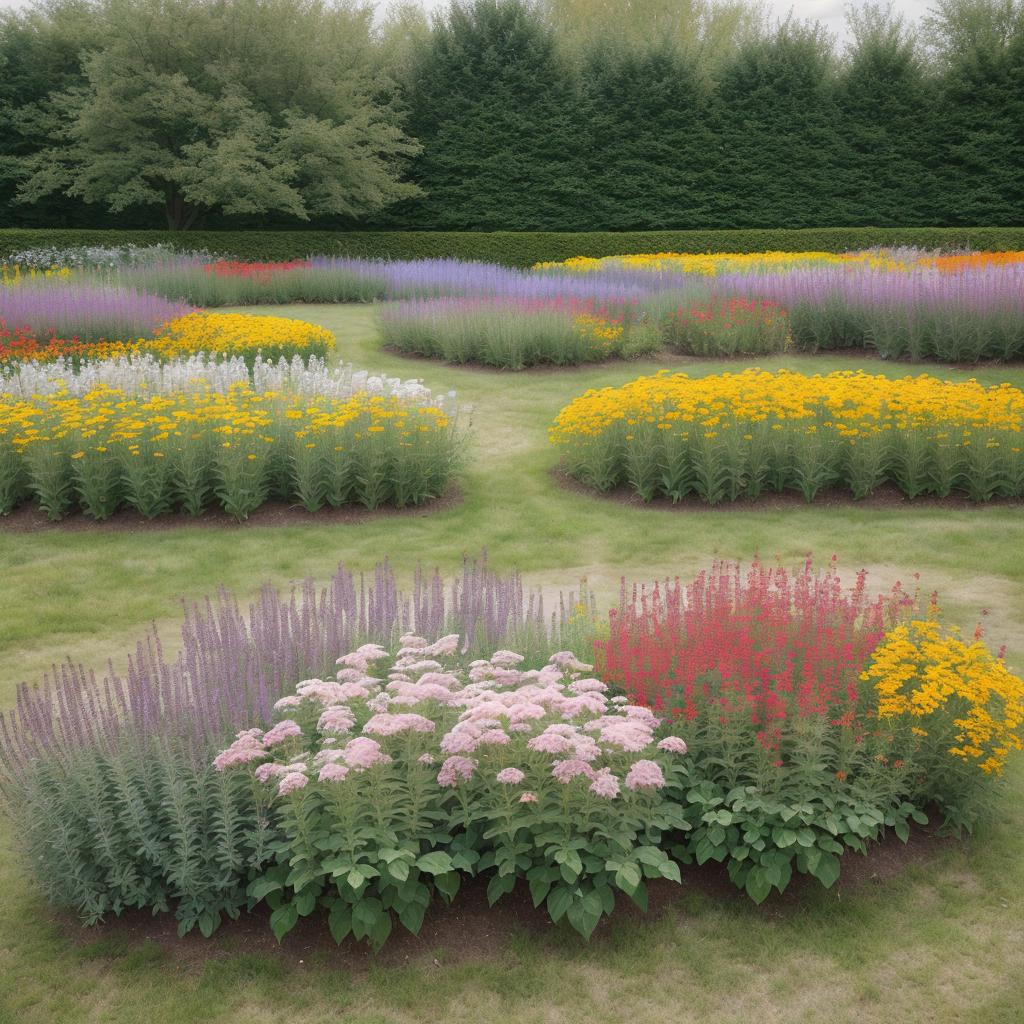Gardening enthusiasts understand the joy and beauty that a well-planned flower bed can bring to their outdoor space. Creating a vibrant flower bed is like composing a symphony of colors that harmonize with each other. In this comprehensive guide, we’ll delve into the art of planning a stunning flower bed that not only adds visual appeal to your garden but also fosters a healthy and thriving ecosystem. From selecting the right flowers to strategic placement, we’ll cover it all.
Choosing the Right Flowers for Your Symphony
-
Understanding Your Climate Zone
Before you embark on your flower bed journey, it’s crucial to know your climate zone. Different flowers thrive in different climates, so choose varieties that are well-suited to your region. This ensures that your garden will flourish throughout the seasons.
-
Picking a Color Palette
Like any great symphony, a flower bed should have a cohesive color scheme. Decide on a palette that complements your overall garden aesthetic. Consider factors such as the color of your house, existing plants, and your personal preferences.
-
Selecting Flowers for Different Heights
A visually appealing flower bed incorporates flowers of varying heights. Taller flowers at the back provide a backdrop for shorter ones in the front, creating a dynamic and balanced look. Research the height and growth habits of your chosen flowers to plan their placement effectively.
Designing the Layout of Your Flower Bed
-
Creating Focal Points
Every symphony has its crescendos, and your flower bed should have focal points that draw the eye. Select a few standout flowers or ornamental plants to serve as the stars of your garden. Place them strategically to create visual interest.
-
Considering Bloom Times
To ensure a continuous display of colors, choose flowers with different bloom times. This guarantees that there’s always something in full bloom, providing year-round appeal. Research the flowering seasons of your selected plants and arrange them accordingly.
-
Implementing Companion Planting
Just as instruments in an orchestra complement each other, certain plants thrive when planted together. Explore companion planting techniques to enhance the health and vitality of your flower bed. For example, marigolds can help deter pests, while certain herbs promote overall plant growth.

Preparing the Soil for Your Flower Symphony
-
Testing and Amending Soil
The foundation of a successful flower bed lies in the soil. Test your soil to determine its pH and nutrient levels. Amend it as needed to create an optimal environment for your chosen plants. Well-draining soil is essential for most flowers to prevent waterlogged roots.
-
Mulching for Moisture Retention
Mulching not only adds a polished look to your flower bed but also helps retain soil moisture, suppress weeds, and regulate temperature. Choose organic mulches like bark or compost to nourish the soil as they decompose.
Planting and Maintaining Your Flower Symphony
-
Proper Spacing and Planting
Follow recommended spacing guidelines when planting your flowers. Overcrowding can lead to competition for nutrients and hinder growth. Be mindful of the mature size of each plant to ensure they have sufficient room to flourish.
-
Watering Schedule and Techniques
Establishing a consistent watering schedule is crucial for the success of your flower bed. Different flowers have different water requirements, so tailor your watering routine accordingly. Consider using a drip irrigation system to deliver water directly to the roots, minimizing waste.
-
Regular Pruning and Deadheading
Maintain the harmony of your flower bed by regularly pruning and deadheading spent blooms. This encourages new growth and prolongs the flowering period. Pruning also helps shape the plants and prevents overcrowding.
Conclusion
Creating a vibrant flower bed is a rewarding endeavor that transforms your outdoor space into a symphony of colors. By carefully selecting flowers, designing a thoughtful layout, and maintaining proper care, you can orchestrate a garden masterpiece that delights the senses throughout the seasons.
FAQs
Q1: How do I choose flowers that will thrive in my climate?
A1: Determine your climate zone and choose flowers that are well-suited to the temperature and weather conditions of your region.
Q2: Why is mulching important for a flower bed?
A2: Mulching helps retain soil moisture, suppress weeds, regulate temperature, and nourish the soil as organic mulches decompose.
Q3: What is companion planting, and how can it benefit my flower bed?
A3: Companion planting involves strategically placing plants that benefit each other when grown in close proximity. It can help deter pests, enhance growth, and improve overall plant health.
Q4: How often should I water my flower bed?
A4: The frequency of watering depends on the specific water needs of your chosen flowers. Establish a consistent schedule and adjust based on weather conditions.
Q5: What is deadheading, and why is it important for flower maintenance?
A5: Deadheading involves removing spent blooms from plants. This practice encourages new growth, prolongs the flowering period, and maintains the overall appearance of the flower bed.